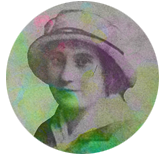The process of deciding on who would be haunting the spaces on the journey from Trafalgar Square to Big Ben took a long time and involved a lot of experiments and rumination.
Initially, research focused on some of the statues themselves – James II, for example, who stands right outside the front of the National Gallery in Trafalgar Square. King for just two years – James II spent most of his life as Lord Admiral of the Navy. At the age of 27, his brother (James I) appointed him as the head of a new organisation called the Royal African Company – with exclusive rights to operate in West Africa. They built forts, they killed local kings, they searched for gold and, most importantly, they built up and monopolised the British trade in enslaved human beings. Within a few years, they were transporting 5,000 enslaved people every year to markets in the Caribbean, and they did so for decades. James was the Duke of York – and many of the people bought and sold by the Royal African Company were branded with the letters “DoY”. Colston was a senior executive of the RAC but, as a result of his leadership of the Royal Navy, it was James who was in charge. There is no mention of his involvement in the slave trade anywhere near his statue.
Despite the gravity of this backstory – as the project progressed it became clear that, even if we told the real stories behind these men up on their plinths, we would still be repeating the practice of only looking in one direction, at the powerful white men.
If you only tell stories about powerful white men – it’s easy to forget that “history” is made by multitudes, and change is often forced through by those who are oppressed rather than gifted by those in power. Inspired by Priyamvada Gopal and her rigorous dissection of how independence from Britain was gained from below, not from above – we shifted gaze to the ghosts who might haunt these spaces that celebrate British history and patriotism.
We set the walking route – and co-writer Sonali Bhattacharyya sought out characters whose stories felt resonant with the places of the route.
For Trafalgar Square, where all the statues are of men from the Navy and that – as a space – tells a story of pomp and grandeur about Great Britain, Olaudah Equiano and his own decision to challenge the dominant narrative felt appropriate.
For Horse Guards Parade – dominated by the army and often full of soldiers, the story of an ex-British army Indian dissident creates a golden thread from the sensation of standing on gravel in contemporary London to his memories of a massacre in another square, elsewhere.
While initial research focused on potential Irish characters who were working against British army occupation, constantly walking past the back end of Downing Street during the development process – and seeing men with machine guns from the London Metropolitan Police (home to recent rapists and murderers Wayne Couzens and David Carrick) – persuaded us to shift focus to Josie McGowan. The Dublin Metropolitan Police were set up by British politician Robert Peel when Ireland was a colony under British rule- and went on to found the London Metropolitan Police. The first woman to be killed by police as part of the Irish War of Independence, Josie creates a sense of chilling echoes resounding across time.


